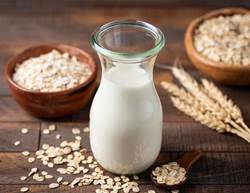The pressure to choose the “healthiest” grain often gets framed as brown rice versus white rice. It doesn’t need to be a high-stakes decision. Rice is a widely eaten, budget-friendly staple for good reason. It’s versatile, satisfying and easy to pair with almost any meal. There are, however, some differences worth knowing.
We spoke to dietitians to explain why and lay out how brown rice and white rice compare so that you can confidently make the best choice for you.
Brown rice vs white rice
The key difference is that brown rice is a whole grain, explains registered dietitian Catherine Perez. “Whole grains maintain both their bran and germ, [two of the three main parts of a whole grain,] while processed grains usually have this coating removed,” she says.
When that outer layer is milled away, white rice, like other refined grains, loses a portion of naturally occurring nutrients. Because of that, “white” grains are often labelled as “bad” and blamed for spiking blood sugars or contributing to diabetes and weight gain, Perez notes. You’ll also hear that white rice is inferior because it’s lower in fibre than brown rice. The reality is more nuanced.
White rice remains accessible, convenient and quick to cook. It’s a staple for many communities “that has received a lot of judgment from ‘a foundation in racism and whiteness because brown rice is seen as the elite choice for nutrition and is found readily in stores in affluent areas,’” explains professional chef and registered dietitian Tessa Nguyen.
In the kitchen, both types work in most recipes. White rice cooks up softer and fluffier, while brown rice is heartier with a slight chew. In terms of energy and carbohydrates, they’re very similar. Keep reading for a simple nutrition rundown so you can choose what suits your body, budget and taste.
Brown rice vs white rice nutrition
The nutritional value of one cup of brown rice is:
- Kilojoules: 995 kJ (238 kcal)
- Fat: 1.9 g
- Carbohydrates: 49.5 g
- Protein: 5.3 g
- Fibre: 3.1 g
- Thiamin (B1): 0.345 mg
- Niacin (B3): 4.97 mg
- Vitamin B6: 0.238 mg
- Magnesium: 76 mg
- Phosphorus: 199 mg
- Iron: 1.09 mg
- Zinc: 1.38 mg
The nutritional value of one cup of white rice is:
- Kilojoules: ~854 kJ (204 kcal)
- Fat: 0.44 g
- Carbohydrates: 44.2 g
- Protein: 4.2 g
- Fibre: 0.63 g
- Thiamin (B1): 0.256 mg
- Niacin (B3): 2.32 mg
- Vitamin B6: 0.145 mg
- Magnesium: 19 mg
- Phosphorus: 67.9 mg
- Iron: 1.88 mg
- Zinc: 0.77 mg
Benefits of brown rice
Brown rice is a complex carbohydrate and a reliable source of fibre, which helps you feel fuller on fewer kilojoules because it slows digestion and steadies energy. It’s a whole grain that supplies B vitamins, potassium, manganese, selenium and some iron.
“Because brown rice keeps the bran and germ, you also get antioxidants and phytonutrients which, alongside fibre, can support gut, immune and cardiovascular health,” says Perez.
Studies show that brown rice contains phenolic acids, which are the most common antioxidants in our diet that reduce the risk of cardiovascular disease, type 2 diabetes, obesity and certain cancers.
Cons of brown rice
Brown rice can be a little harder to digest for some people because it contains phytates (an anti-nutrient) that can reduce the absorption of minerals such as iron and zinc. Rinsing, soaking and thorough cooking can lower phytate levels and improve tolerance. It also takes longer to cook than white rice.
Whole-grain rice can retain more naturally occurring arsenic in its outer layers. Local food regulators advise variety in your grains, rinsing rice before cooking and using plenty of water then draining it to reduce arsenic levels. Recent risk assessments have not identified a general public-health concern, but rotation of grains (e.g., brown and white rice, quinoa, barley) is a sensible approach.
Benefits of white rice
“When enriched, white rice will have a variety of vitamins and minerals so the differences between brown and white rice are not so significant,” says registered dietitian nutritionist Maya Feller. Check the label, as some white rice products are fortified. Like any carbohydrate, white rice provides energy and while it has less fibre than brown rice, it still contributes a little.
“One of the most important benefits of white rice is that it is integrated into many cultural cuisines,” adds Perez. “White rice is surrounded by tradition, family and connection. It goes beyond just physical nourishment. Being able to keep parts of your culture alive absolutely feeds you mentally and helps fulfil you too.”
White rice can be easier to digest for some people because of its lower fibre content. It also pairs well with vegetables or lean protein and, without added fats, is relatively low in kilojoules per serve.
Cons of white rice
White rice can raise blood glucose more quickly than whole-grain options because many varieties have a higher glycaemic index. Portion size and meal composition matter and that combining rice with protein, vegetables or legumes can blunt the rise in blood sugar.
Because the bran and germ are removed during processing, plain white rice has fewer naturally occurring micronutrients and less fibre than brown rice, although fortification can restore some vitamins and minerals. Fibre remains “sorely lacking in many diets,” says registered dietitian Janet Brill, so aim to round out a white-rice meal with fibre-rich sides or choose lower-GI varieties when possible.
Is white or brown rice healthier?
Eating brown rice is an easy way to lift your whole-grain intake, but both have benefits, Perez says. In practice, choose the one you enjoy and make sure the rest of your plate lines up with your nutrition goals.
White rice is rarely eaten on its own and you can pack in a tonne of nutrients with what you serve alongside it—fresh vegetables and lean protein—so the type of rice won’t matter as much, Perez says. It often comes down to preference. “People should make food choices based on affordability, accessibility, current health status and cultural relevance,” Feller says.
Can I eat rice every day?
“If someone wants to eat rice each day it’s absolutely OK,” Feller says. “There are a number of cultures around the globe that eat rice as a staple part of their pattern of eating.” As with any food, Brill says portion control matters if you’re aiming to maintain or lose weight and if you’re managing your blood glucose, speak with your GP or an accredited practising dietitian about ways to include it that work for you.
Why did people stop eating brown rice?
You may have heard some people steering clear of brown rice after a February 2025 study detected arsenic—a naturally occurring element found in soil and water—in many samples. In its inorganic form, arsenic is classified as a carcinogen by the World Health Organization. The study reported that levels reflected where the rice was grown and the fact that brown rice retains its outer layers rather than being milled. It concluded that these small potential exposures posed no acute public health risk to the general population.
Australian food guidance has long recommended variety in grain choices and simple prep steps that can lower arsenic content, such as rinsing rice before cooking and using a higher water-to-rice ratio then draining. Local research has also noted that arsenic levels vary by growing region and water practices, which is another reason to keep a mixed-grain approach across the week.
That context aside, dietitian Destini Moody does not see brown rice disappearing. “I actually feel as if brown rice is more popular now than I’ve seen it in my professional career,” she says. “I believe this has something to do, in part, with more public awareness about the health benefits of eating for more controlled blood sugars.” People are also aiming to eat fewer refined grains in excess, she adds.
What is the best rice for weight loss?
“Even throwing in the likes of black, red and wild rice, I’d still say brown rice is the best for weight loss,” says Moody. “Though all rice is similar in energy, the high fibre content of brown rice means it hangs out in the stomach for longer, making the meal feel more satisfying for a longer period of time. This level of hunger control can help one eat less throughout the day and can prevent one from feeling as if they are starving while dieting in a kilojoule deficit.” Regular brown rice intake has also been linked with lower body weight in observational research.
If you enjoy brown rice, keep it in rotation. If you prefer white, pair it with vegetables, legumes and lean protein and vary your grains through the week. For anyone concerned about arsenic, rinse rice, cook in excess water and drain and keep a varied grain pattern.
.jpg&h=630&w=1120&c=1&s=1)









